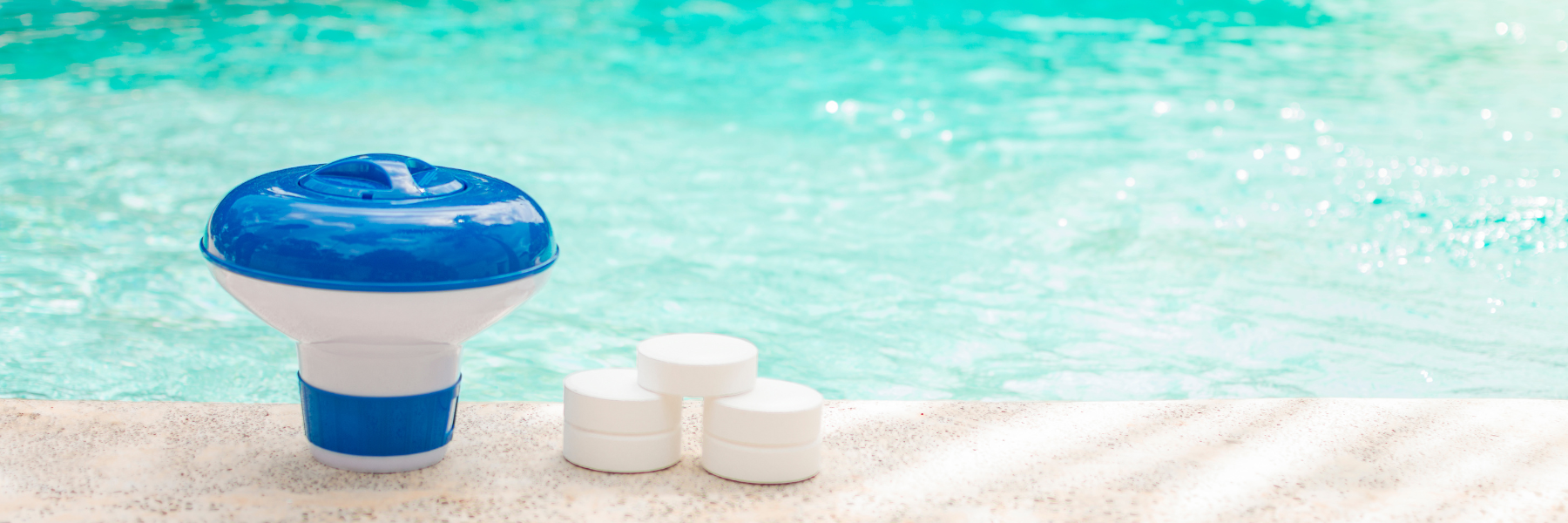itseurope@sensafe.com +44 (0)1722 717911
Email: itseurope@sensafe.com
Phone: +44 (0)1722 717911

Understanding Chlorine in Swimming Pools and Hot Tubs: Free, Combined, and Total Chlorine Differences and Importance
When it comes to maintaining the pristine waters of swimming pools and hot tubs, chlorine plays a crucial role. Chlorine effectively disinfects and sanitizes the water, ensuring a safe and enjoyable environment for swimmers. However, the term "chlorine" isn't a one-size-fits-all concept – it comprises different forms that impact water quality differently. In this blog, we'll delve into the differences between free, combined, and total chlorine in swimming pools and hot tubs, and why each form is important.
Free Chlorine: The Active Sanitizer
Free chlorine is the form of chlorine that is actively available to sanitize and disinfect the water. It's the chlorine that's actively killing bacteria, viruses, and other microorganisms that might be present in the water. This is the chlorine that you test for when using a pool or hot tub testing kit, and having reliable tools like the Safe Swim Meter can ensure accurate measurements. Free chlorine works by breaking down the cell walls of these harmful microorganisms, rendering them harmless.
Maintaining an appropriate level of free chlorine is crucial because it ensures the water remains safe for swimmers. However, free chlorine levels that are too high can cause discomfort to swimmers, leading to red eyes, dry skin, and a distinct chlorine odor.
Combined Chlorine: The Chloramine Issue
Combined chlorine, often referred to as chloramines, is the result of the interaction between free chlorine and contaminants introduced to the water by swimmers. These contaminants can include sweat, oils, urine, and cosmetics. Unlike free chlorine, combined chlorine is not as effective at disinfecting the water and can lead to unpleasant side effects such as the notorious "chlorine smell" and skin and eye irritation.
To prevent the buildup of combined chlorine, known as "chloramines," it's crucial to maintain a proper sanitation regimen and ensure adequate water circulation. Regular shocking – adding a large dose of chlorine – can help break down chloramines and keep the water clean and comfortable.
Total Chlorine: The Sum of Chlorine Forms
Total chlorine is the sum of both free chlorine and combined chlorine in the water. It represents the complete chlorine content present in the pool or hot tub at any given time. Monitoring total chlorine levels helps you understand the overall chlorine concentration, including both the effective disinfecting free chlorine and the less effective combined chlorine.
The difference between total chlorine and free chlorine indicates the amount of combined chlorine present in the water. If the total chlorine level is consistently higher than the free chlorine level, it suggests the presence of chloramines, indicating the need for corrective action.
Importance of Understanding and Balancing Chlorine Forms
Understanding the differences between free, combined, and total chlorine is pivotal for maintaining a clean and safe swimming environment. Regular testing and proper water maintenance are essential to strike the right balance between these chlorine forms. By maintaining adequate free chlorine levels and utilizing tools like the Safe Swim Meter for accurate measurements, you ensure effective sanitization without causing discomfort to swimmers. By controlling combined chlorine levels, you prevent the formation of chloramines that lead to unpleasant odors and irritations.
In conclusion, chlorine is a dynamic chemical compound in swimming pools and hot tubs, existing in various forms with distinct roles. Free chlorine actively disinfects, combined chlorine can lead to water quality issues, and total chlorine represents the sum of both forms. By comprehending these differences and monitoring chlorine levels diligently, with tools like the Safe Swim Meter, you can ensure your pool or hot tub remains a safe, inviting oasis for all to enjoy.